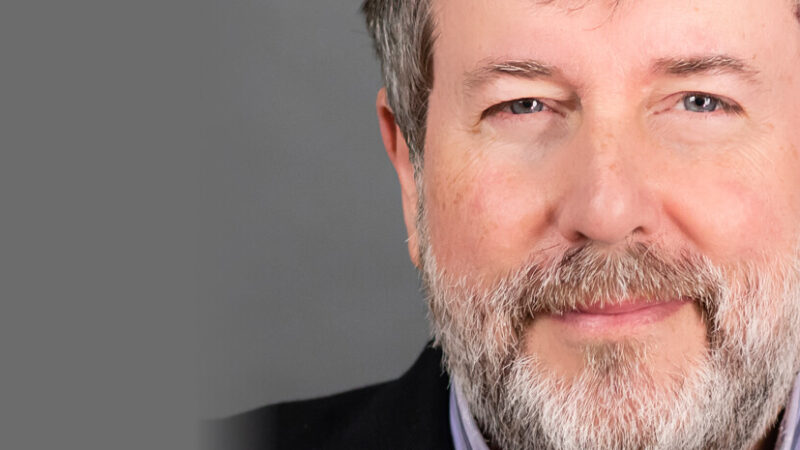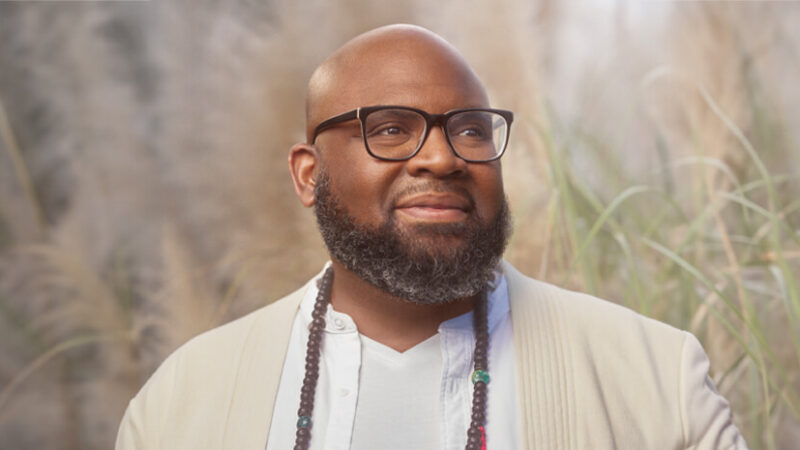-
E117: The Real Work: Letting Go from Within
Michael Singer — October 2, 2025
True spirituality isn’t about mystical experiences or lofty ideals—it’s about honestly facing...
-
Once More: Reflections on Reincarnation and the Gap Between Lives
Tami Simon — September 26, 2025
In this special reflection episode of Insights at the Edge host Tami Simon looks back on her...
-
Honey Tasting Meditation: Build Your Relationship with Sweetness
There is a saying that goes “hurt people hurt people.” I believe this to be true. We have been...
Written by:
Amy Burtaine, Michelle Cassandra Johnson
-
Many Voices, One Journey
The Sounds True Blog
Insights, reflections, and practices from Sounds True teachers, authors, staff, and more. Have a look—to find some inspiration and wisdom for uplifting your day.
Standing Together, and Stepping Up
Written By:
Tami Simon -
The Michael Singer Podcast
Your Highest Intention: Self-Realization
Michael Singer discusses intention—"perhaps the deepest thing we can talk about"—and the path to self-realization.
This Week:
E116: Doing the Best You Can: The Path to Liberation -
Many Voices, One Journey
The Sounds True Blog
Insights, reflections, and practices from Sounds True teachers, authors, staff, and more. Have a look—to find some inspiration and wisdom for uplifting your day.
Take Your Inner Child on Playdates
Written By:
Megan Sherer
600 Podcasts and Counting...
Subscribe to Insights at the Edge to hear all of Tami's interviews (transcripts available, too!), featuring Eckhart Tolle, Caroline Myss, Tara Brach, Jack Kornfield, Adyashanti, and many more.
Most Recent
E37: From Complaints to Contentment: A Guide to Inner ...
We live on an extraordinarily amazing planet compared to any others we have seen. Yet, despite this, we are prone to complaining on a daily basis. Personal dissatisfaction arises from judging and resisting reality and suppressing past emotional pain. This creates the buildup of lifelong inner blockages that cause even more suffering and dissatisfaction. By releasing these blockages and transcending the limitations of the personal mind, we can achieve spiritual growth and experience true contentment and joy.
For more information, go to michaelsingerpodcast.com.
© Sounds True Inc. Episodes: © 2024 Michael A. Singer. All Rights Reserved.
Avanti Kumar-Singh, MD: The Ayurvedic Longevity Prescr...
The term Ayurveda is traditionally defined as “the science of life.” Physician and leading Ayurvedic teacher Dr. Avanti Kumar-Singh has another definition: she calls it “the knowledge of longevity.” In this podcast, join Tami Simon in conversation with Dr. Kumar-Singh about her new book, The Longevity Formula. Take a listen as they discuss the many ways that Ayurveda can support high-quality living, especially in your later years, by increasing cellular repair, decreasing inflammation, and keeping you connected with “your people and your purpose.”
Learn more about integrating Ayurvedic principles into Western medicine; lifespan versus health span; vitality, enthusiasm, and joy; forging stronger ties with your community and purpose; the causes and effects of cellular damage; the nine mechanisms of aging; bringing prana, or life-force energy, directly into your body through your natural surroundings and your diet; how all health and illness begins with the energetic body; what nourishment means in the Ayurvedic perspective; the Ayurvedic understanding of body tissues; good inflammation (yes, that’s a thing!); five Ayurvedic lifestyle interventions you can explore today; breathwork and the adage, “the inhale excites you and the exhale relaxes you”; giving and receiving love; the five doshas, or elements; and more.
Note: This episode originally aired on Sounds True One, where these special episodes of Insights at the Edge are available to watch live on video and with exclusive access to Q&As with our guests. Learn more at join.soundstrue.com.
E36: Overcoming Suffering Through Acceptance
Human suffering arises from resisting experiences and holding onto preferences shaped by past events. Liberation is achieved by letting go of attachments and embracing the present moment with openness and acceptance. Through consistent practice and self-awareness, you can transcend psychological pain, rediscover inner peace, and experience a life filled with joy and equanimity. Once you reach this state, you are ready to selflessly serve others.
For more information, go to michaelsingerpodcast.com.
© Sounds True Inc. Episodes: © 2024 Michael A. Singer. All Rights Reserved.
Customer Favorites
Russ Hudson: The Enneagram: Nine Gateways to Presence
Russ Hudson is one of the world’s foremost teachers and developers of the Enneagram personality typology system, having coauthored (with Don Richard Riso) five bestselling books on the subject. With Sounds True, Russ has created an 11-CD audio-learning program called The Enneagram: Nine Gateways to Presence. In this podcast, Tami Simon speaks with Russ about the original purpose of the Enneagram, how our personality types are linked to a deeper level of awareness, and how we can use the Enneagram system to continually discover that we are much more than we may habitually think. They also discuss accessing the gifts of our personality types while avoiding the associated pitfalls or “fixations” of any given type, an overview of each of the nine types, Russ’ guidance in determining your own type, and much more.
Lama Rod Owens: The Path of the New Saint
To be a New Saint is to move into a direct relationship with suffering—our own and that of the world—and make a commitment to disrupt that suffering in any way we can, for as long as it takes. In this podcast, Tami Simon speaks with Lama Rod Owens about his trailblazing new book, The New Saints: From Broken Hearts to Spiritual Warriors.
Give a listen to this inspiring conversation on how each one of us can become effective agents of social and spiritual liberation. Tami and Lama Rod discuss awakened care and bodhicitta; partnering with ancestral forces and the unseen world; brokenheartedness and our collective emotional labor; disrupting reactivity; the radical act of choosing joy; experiencing our true home; two traits of a prophet: embodying clarity and telling the truth; the New Saint as an ordinary human being; the practice of receiving love; spiritual warriorship and what it means to “fight within love”; prayers of protection; the commitment to get free from suffering; consenting to the work of being a New Saint; and more.
Note: This episode originally aired on Sounds True One, where these special episodes of Insights at the Edge are available to watch live on video and with exclusive access to Q&As with our guests. Learn more at join.soundstrue.com.
Sandra Ingerman: Healing with Spiritual Light
Sandra Ingerman is an internationally renowned shamanic teacher and the author of many books. Her published works include The Book of Ceremony, Walking in Light, and Awakening to the Spirit World. In this episode of Insights at the Edge, Tami speaks with Sandra about the upcoming online course Healing with Spiritual Light: The Shamanic Power of Transfiguration to Heal Ourselves, Each Other, and the Earth. Specifically, Sandra comments on transfiguration as a spiritual practice, highlighting how it can be a portal to both physical and environmental healing. Tami and Sandra talk about the inherently transforming power of light, as well as some of the scientific evidence around transfiguration. Finally, Sandra emphasizes the imperative to engage with transfiguration in the face of climate change and considers the future shape of human culture. (66 minutes)






